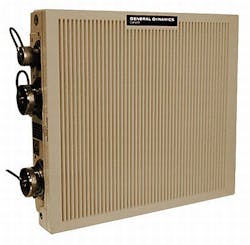Rugged vetronics embedded computer and smart display offered by General Dynamics Canada
OTTAWA, 13 Nov. 2013. General Dynamics Canada in Ottawa is introducing the PE8000 embedded computer and SD8000 smart display for vetronics applications in military land vehicles.
The rugged computers and displays enable armed forces to equip vehicles with compatible computing regardless of display requirements, saving space, weight, and power over conventional architectures, General Dynamics officials say.
The PE and SD8000 family of embedded computing and smart displays equipped with quad-core 3rd generation Intel Core processors are convection-cooled, and offer several video and audio input channels, streaming and snapshot video capture, several vehicle-bus interfaces, wireless communications, VoIP capabilities, embedded Ground-based GPS Receiver Application Module, several I/O ports, and a solid-state hard drive.
General Dynamics has also integrated Intel virtualization technology to enable multiple independent levels of security/safety (MILS), a high-assurance security architecture for controlled information.
The PE8000 embedded computers and SD8000 smart displays were developed for ground combat vehicles used in harsh military environments. Their enhanced product has provide a flexible platform that adapts to changing mission dynamics while supporting interoperability and future technology enhancements.
General Dynamics' family of rugged computing and smart displays are installed on a variety U.S. Army ground combat platforms including the Mine Resistant Ambush Protected (MRAP), Stryker and Bradley vehicles.
For more information contact General Dynamics Canada online at www.gdcanada.com.

